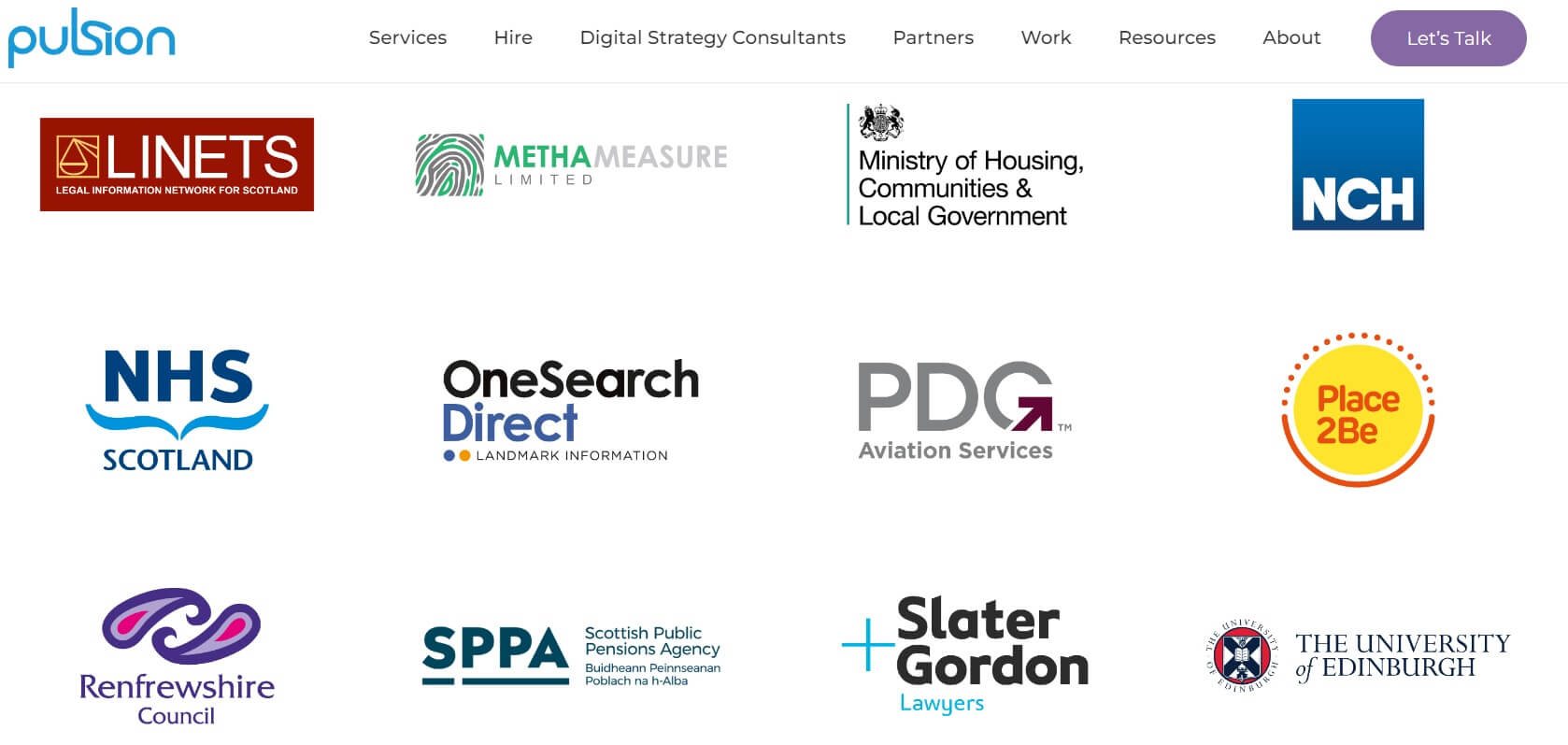The right cloud cost optimization strategy can create significant cost savings and reduce cloud costs across the board.
Most cloud providers have tools and strategies to help businesses optimize cloud costs. Besides, cloud computing statistics show that 60% of all corporate data is stored within a cloud.
Gartner analysts predict that 85% of companies will adopt a cloud-first strategy by 2025, and 39% of cloud-based companies believe using the cloud enables cost-cutting benefits.
Ultimately, mastering cloud cost management methods helps your business objectives embrace the cloud while reducing the cloud cost.
Let’s show you the strategies you need for cloud cost optimization.
What Are Cloud Cost Management Tools for Cost Optimisation?
Various cloud cost management tools reduce cloud spending to avoid overspending. Cloud costs shouldn’t break the bank.
Instead, a good cloud cost reduction strategy with management tools can reduce a cloud bill. A few cloud cost management tools from the major cloud providers are available for cost optimisation.
Microsoft Azure, Google Cloud, and AWS have cost management tools. The AWS Marketplace has AWS Cost Explorer, AWS Budgets, and AWS Trusted Advisor.
Additionally, Microsoft has Azure Cost Management, Azure Advisor, and Azure Cost Anomaly Detection tools. Google Cloud uses Billing Reporting and CUD Analysis tools to optimize costs.
Here’s a quick comparison of the primary UK provider’s cloud cost management tool options to manage or reduce cloud costs:

What’s the Average Cloud Hosting Cost in the UK?
The average cost of cloud hosting in the UK varies, depending on instances and monthly versus hourly pricing plans.
The table below shows the average cloud hosting costs for different instances and pricing plans on the main cloud providers in the UK.

Why Should You Implement a Cloud Cost Management Strategy?
The table above reveals that various factors influence cloud hosting costs. It helps to know the advantages of cloud management strategies to give you peace of mind.
The benefits of cloud optimization strategies include the following:
Reduce your cloud expenditure
Stop paying for unused resources
Ensure resource efficiency
Only pay for the cloud infrastructure used
Avoid overpaying for services you can get cheaper elsewhere
Budget control costs and predictability
Accurately forecast future expenditure
Improve overall cloud oversight and transparency
Free up money for other innovative initiatives
Preserve a competitive advantage
Benefit from cloud resources while cutting spend
Enjoy a higher return on investment (ROI)
A Flexible Approach to Cloud Migration Services at Pulsion
A flexible approach is often the cheapest cloud migration strategy we offer at Pulsion Technology. Our cloud migration services include facilitating affordable and easy cloud adoption.
Contact us today to learn more about our cloud migration and custom software development. Custom development and migration are pivotal to ensure strategies meet your business objectives.
Contact our digital strategy consultants to discuss flexible cloud computing, multi-cloud strategies, or how to optimise cloud resource usage. Our team is a proud AWS partner and Azure partner in Scotland.

Avoid cloud vendor lock-in by migrating into multiple clouds, enabling you to use cloud monitoring tools and more resources for cost reporting, resource accounting, and resource usage.
Also, read our AWS vs. Azure vs. Google Cloud Platform Comparison to understand the differences between the primary cloud providers in the UK.
The Ultimate Cloud Cost Management Strategy to Reduce Costs
Effective cloud cost management tools automate how you manage resources, unused resources, and reserved instances. Cloud technology is the future, so you need all techniques or savings plans.
However, let’s show you the 15 ultimate methods to manage costs across your cloud usage patterns, cut spend by removing unnecessary costs, and optimise cloud investments.
Understand the Cloud Bills to Avoid Surprise Bills
Understanding an AWS bill or cloud compute billing is the first step toward high cloud cost freedom and using cloud technology as a weapon of mass success in your business goals. Cloud computing surprise costs won’t make your cloud platforms cost-effective or maximise savings.
Most public cloud providers issue a cloud bill. Understand every expenditure on it before initiating cost-efficiency. Cloud vendors typically add the following associated costs to cloud billing:
Bandwidth Costs – The “egress” costs of data moving in and out of your cloud environment.
Cloud Compute Costs – Price of the processing power used, virtual machine types and sizes, regional differences, and instances applied.
Discounts and Savings Plans – The cost of upfront payments, reserved instances, committed use contracts, or any discounts reducing your cloud bill.
Managed Services Costs – Cloud usage per hour rates for services like managed databases.
Storage Costs – Charges for block or object storage types, data retrieval, transfer fees, and redundancy options.
Support Costs – Some cloud providers charge for support separately from the hosting fees.
Request Cost-Effective Pricing Models With Predictable Billing
Be careful planning a cloud partnership with providers that don’t offer predictable bills and cost-effective pricing plans. The average costs of cloud provider services show low prices and a detailed breakdown of pricing per hour or month.
Stick to well-known providers for predictable cloud financial management and better performance or best practices. Ask for a breakdown of hourly and monthly rates for the account information from tip one. AWS uses variable pricing, while Azure and Google Cloud use fixed pricing plans.
Partner With a Trusted Cloud Service Provider
Pulsion Technology has the clients and case studies to showcase our 30+ years of experience in cloud migration and software development. Our cloud partnerships also give you peace of mind.

Only work with trusted or licensed cloud partners in the UK if you wish to reduce costs. Learn more about us to see why we’re passionate about providing the ultimate services as a trusted partner.
Partner with a cloud services company with FinOps Foundation and other AWS, Azure, or Google Cloud certifications in the least to take advantage of cost control platforms and be able to save money.
Reduce Network Resources and Traffic Across Zones and Regions
Your company can pay more for cloud process functions in different regions and zones for example. Focus on the cloud regions and zones suitable for managing your availability where it matters.
Businesses can cut expenses for cloud-based software by reducing workloads and availability in unnecessary locations. Do you need to use African cloud regions if you don’t ship to the countries?
Implementing this strategy is to consider whether your enterprise service or workload is a resource waste in different countries. Allocate optimal region and zone availability to save on a cloud account.
Optimise Storage Tiers and Capacity for Your Business Value
Another prime example of cloud cost management for an enterprise is to account for your storage tier, capacity, and workloads to make informed decisions to stop financial waste.
Pay less for cloud services in your company by managing storage capacity with the appropriate tiers. Businesses must choose the types of data and storage solutions that work for their business needs.
Various storage tiers can offer a reasonable price without unexpected costs. Use Amazon S3 intelligent tiering or cost adjustments to make informed decisions based on project budgeting.
Discuss companies’ needs with a vendor because they offer various object or block tiers. High-performance versus low-cost tiers depend on access frequency and data performance requirements.
Adjust Cloud Architecture to Limit Data Transfers
Avoiding unnecessary data transfers can reduce cloud usage costs. Cloud costs rise if you don’t avoid unnecessary data transfers. Providers also charge data egress fees when you move data between regions, networks, and cloud infrastructure.
Reduce your data transfer fees with data migration into the ultimate storage tier. Proper storage management, historical data storage, analysis, and forecasting metrics can also control prices without risking service capabilities.
Take action with a tool to automate capabilities. metrics, and reports. Additionally, identifying unused platform storage can significantly accelerate cloud cost optimization. The platform enables native tools automation from the major providers.
Alternatively, leverage software system optimisation on servers by reducing storage capacity in the optimal configuration on the cloud platform.
Optimising workloads, proper CPU utilisation, and implementing user-friendly architecture to limit data transfers will optimise resources and cut cloud costs.
Reduce Idle Computing Resources and Cloud Sprawl By Right-Sizing Instances
Idle resources or unused resources only add to cloud spend. Rightsizing instances and cloud resource usage should be integral to cloud cost management and prevent uncontrolled cloud resource proliferation.
Firstly, remove unused instances and resources on a cloud platform to enable cost savings plans. Monitor the aspects and instances still relevant or crucial to your business consumption. Also, avoid last-minute purchases with the right instances, like a spot instance.
Evaluate and assess features, public cloud instances, compute instances, and other resources. Take action to remove the rest to see a difference in platform and feature prices.
Secondly, engineers cleverly delete storage instances after deleting the relevant compute instances. Developers and engineers know the storage instances remain once cloud instances are gone.
Finally, understanding a cost-effective instance solution or model in engineering makes provision for savings plans. Planning and reporting guide complex variables to purchase better instances.
For example, reserved instances can save up to 80% compared to on-demand instances or public cloud instances. Amazon EC2 Reserved Instances (RIs) is an example. The Google Committed Use Program is another.
Also, our developers can inform you more about Amazon EC2 Spot Instances, giving you access to discounts for unused capacity. Monitor spot instance pricing and discover the right use cases for spot instances to cut unnecessary expenses. Also, consider load balancing with spot instances.
Integrate spot instances with load balancing. Load balancers keep your workload distributed evenly in complex capacities. A balancer alerts engineering teams when the load loses balance.
Explore Kubernetes Environment for an Autoscaling Solution
The right cloud environment lets you scale without adding to the cloud spend. Leverage a scalable model to support your cost optimization operation. Automation can cut costs by reducing unutilized resources or unused snapshots, reduce waste, and perform critical actions.
Kubernetes clusters and environments maximise savings for finance teams and different teams involved in cloud cost management. Automated actions will analyse and re-balance container clusters while removing leftover resources.
Start saving with machine learning and automated scaling solutions from Kubernetes for variable workloads without compromising performance on virtual machines. Specific teams can even help you automate multi-cloud container clusters.
Use Real-Time Monitoring and Analytics to Reduce Minor Cost Anomalies
Access cost data with the cloud cost intelligence tools from your provider. A cloud provider offers cloud cost management tools to reduce cloud waste, use cost centers, and leverage cost data.
Here’s how the cloud cost management tools and cost centers can help you reduce cloud costs:
CPU Utilisation – Real-time monitoring tools for CPU usage identify an underutilized instance.
Memory Utilisation – Real-time monitoring helps identify the need for right-sizing instances.
Network Traffic – Analytics can pinpoint high availability in a network to show working instances.
Instance Uptime – Tracking instances turn underutilised instances off to track costs properly.
Error Rates – Tracking error rates detects reloads or problems that may cause higher costs.
Careful planning or strategic planning can eliminate wasteful spending related to cloud pricing. Track cost-saving opportunities with cost-monitoring or cost-management tools.
Your company cost center will thank you for the savings. Meanwhile, you can detect idle cloud resources. Idle resources only add to your business cost center and accounting department.
Work With Public Clouds to Reduce Cloud Spend
Public cloud providers offer discounts or discount programs as an alternative to on-premises infrastructure. Public providers provide a smaller cloud budget proposal for small businesses and large enterprises. First, choose the right public cloud instances to fit your budget.
Apache CloudStack is a public cloud example. Then, limit access to public cloud environments to reduce costs. Save by limiting stakeholder access to public cloud providers. Restrict individual users for improved cloud management and spending because customers can drive unexpected costs.
5 More Tips to Reduce Cloud Spending
Cloud-native tools like Spot Eco, scale opportunities, and using the most efficient size for storage are ways to make hosting costs fit budgets. However, here are more tips to manage cloud costs and usage spending for performance, cost-effective, and deployment benefits:
Track and monitor cost anomalies to eliminate minor anomalies. Set alerts on usage performance, security anomalies, team visibility, workload ability, feature visibility, and market trends to forecast efficient management of cloud costs.
Optimise cloud costs in every phase of the software development lifecycle (SDLC). Track and monitor costs related to software development planning and control operation and deployment spending with a cloud tool of choice.
Minimise software licensing costs related to cloud operating costs by looking for license-tracking tools on the AWS marketplace. Identifying unnecessary licenses can make cost budgeting easier.
Identify and consider a cloud-native design to reduce cloud spending. Use an auto-scaling architecture tool with native capabilities on the design team for increased visibility with lower prices.
Run workloads where cloud computing costs less. Fully remote businesses could identify regions for added visibility while never increasing the price. However, check the security requirements and governance or regulatory conditions for the region to ensure you don’t need more usage licenses.
Summing Up Cloud Spend Optimisation
Cloud management best practices determine usage fees, customers, demand, resources, and the business budget. A cloud infrastructure budget doesn’t have to sign three-year commitments.
It also doesn’t have to destroy your company’s best practices or alter security requirements. Many businesses without traditional on-premises infrastructure manage their cloud and maximise savings.
Determine whether you manage cloud costs efficiently or need a cloud partner to reduce cloud resources, optimise other cloud resources, and ensure you meet security and governance standards.
Contact us today to discuss your cloud migration needs.
Cloud Cost Management FAQs
Can I Use a Multi-Cloud Cost Management Strategy and Stay Competitive?
A multi-cloud management strategy gives you access to greater visibility and management tools while saving your cost centre. Also, you can practice better forecasting with a multi-cloud approach. You’ll compare well to other companies in your industry.
What’s the Most Efficient Use of Storage in Cloud Cost Management?
Operate on block storage if you need large data volumes with low-latency workloads, such as a workload requiring high-performance speed and database features.
What Is Right-Sizing in a Cloud Cost Management Strategy?
Right-sizing instances describes how to remove unused instance features or resources to replace them with more cost-efficient alternatives that suit your organisation.
Can I Set Budgets With a Cloud Provider?
One of the key features of AWS, Azure, and Google tools is that you can set budgets, track spending, and practice an improved forecasting sense.
Can I Increase Visibility While Reducing Costs on Cloud Platforms?
Yes. All usage costs even AWS usage, originate from regions. On the one hand, remove unused regions if they don’t serve your business. On the other hand, move data to cheaper regions for more visibility if they serve you. The practice of using cheaper regions for service benefits customers in those areas.




